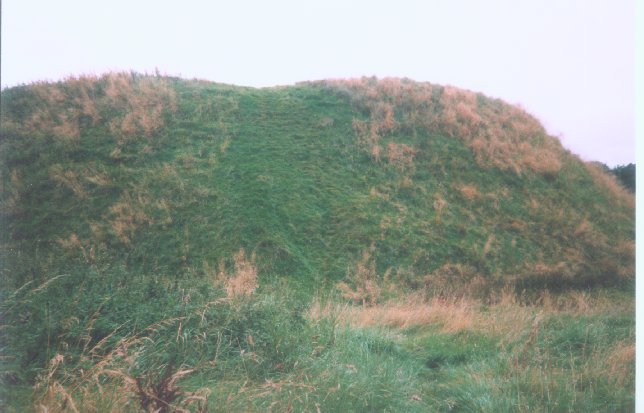BORDER VILLAGES
ELSDON
Hae ye ivver been at Elsdon ?
The world's unfinished neuk
It stands amang the hungry hills,
An' wears a frozen leuk.
The Elsdon folk like diein' stegs
At ivvery stranger stare;
An' hather broth an' curlew eggs,
Ye'll get for supper there.
Yen neet aw cam tiv Elsdon;
Sair tired efter dark
Aw'd trovell'd mony a lyensome meyle
Wet through the varra sark
Maw legs were warkin' fit ta brik,
An' empty was me kite,
But nowther love nor money could
Get owther bed or bite.
At ivvery hoose iv Elsdon
Aw teld me desperate need,
But nivver a corner had the churls
Where aw might lay me heed;
Sae at the public hoose aw boos'd
Till aw was sent away;
Then tiv a steyble- loft aw crept
An' coil'd amang the hay.
Should the Frenchers land iv England
Just gie them Elsdon fare;
By George ! they'll sharply hook it back,
An' nivver cum ne mair
For a hungry hole like Elsdon
Aw nivver yit did see;
An' if aw gan back tiv Elsdon,
The De'il may carry me.
George Chatt, who wrote this poem, must have had a bad day! Elsdon is now a most friendly place and you will be made most welcome.
There is so much to see at Elsdon that it is quite possible to spend a whole day there, and more.
The name is said to be derived from
“Ella” or Elli” a Danish giant living in the hills, or
from the Anglo-Saxon meaning Ell's dene or valley.
Elsdon was the medieval capital of Redesdale and a regular country market was held every Tuesday on the large village green which is now enclosed by many interesting buildings.
There is the pele tower, a vicar's pele, well preserved and still inhabited. There is no access to the public, of course, but It can be photographed without invading the owner’s privacy.
St Cuthbert’s Church standing high above the green invited a visit. The church was the last resting place of many of the Battle of Otterburn's dead.
The hill to the north
of the village is the remains of a Norman motte and bailey.
In later times a Norman castle was built on top of these earthworks which
became the home of the Umfravilles, Norman Lords of Redesdale.
This family were heavily involved in making many Border raids into Scotland and were responsible for the destruction of many a Scottish town and village.
There are a number of ancient British camps and settlements in the vicinity of Elsdon
Nearby is another Gallows Hill where many an adventurous Scot ended his career.
The road south to Cambo follows the route of an old drove road. It was along roads such tracks as these that cattle were driven south to the markets of the English Midlands and elsewhere.
About two miles beyond Elsdon is a clump of trees on the right which marks the spot where a blacksmith conducted a healthy business employing five men. The drove road was of grass, but a short distance along the way, at the Cambo junction, the trail joined a metalled road. In preparation for this hard surface the cattle would be shod. This would be a lengthy task and hazardous as the cattle were unlikely to be very co-operative.
The blacksmith had seen a gap in the market and had promptly filled it. He established a lucrative trade, the business only coming to an end when droving ended.
And finally, but not at all least, the village has a pub, a café, parking and toilets.
Hae ye ivver been at Elsdon ?
Yes!
And enjoyed every minute of it!
Three miles off the A696, the main Newcastle-upon-Tyne to Carter Bar road, near Otterburn.


Around and About